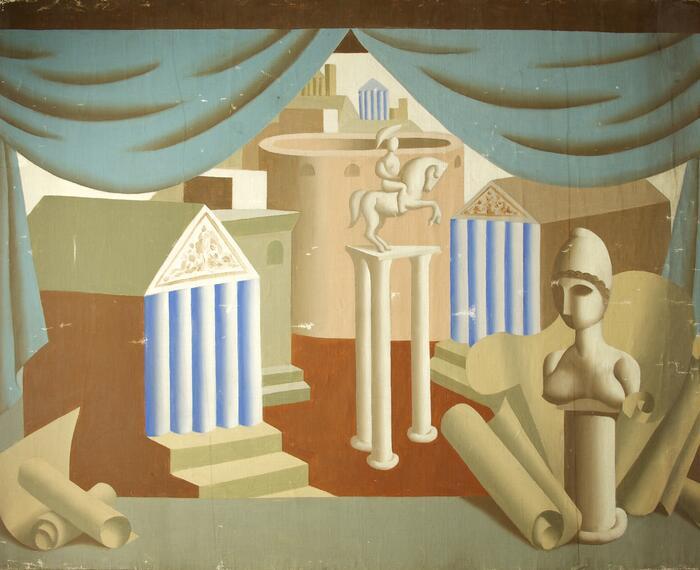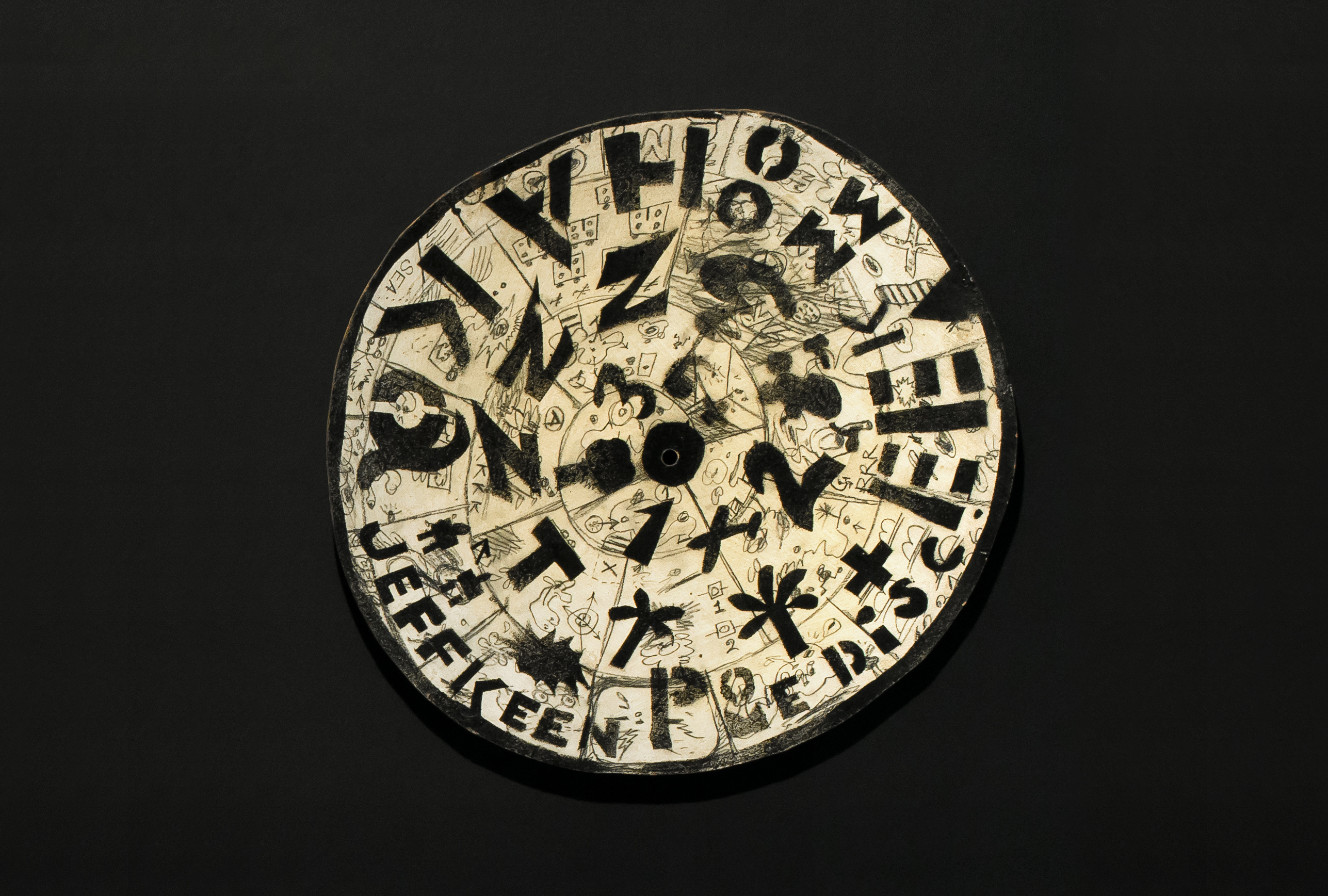Dimensions:
52 cm
Credit:
Presented by the Contemporary Art Society, 2020/21
Ownership history:
Purchased from Stella Keen (Estate of Jeff Keen) by the Contemporary Art Society, 2021; presented to Brighton Museum & Art Gallery, Brighton and Hove, 2021
Jeff Keen was an artist and experimental filmmaker who lived and worked in Brighton from the 1950s until his death in 2012. An important contributor to Britain’s 1960s countercultural scene, Keen staged numerous expanded cinema and poetry performances, most famously at the legendary Better Books on Charing Cross Road, London. He was also co-founder of the London Film-makers’ Co-op and founded the Film Society at Brighton Art College.
Jeff Keen featured his friends and family in his films, performances, artworks and poetry. Acme Generating Co is a series of Polaroid photographs showing these stars in his mythical universe. Posing are Keen, his wife Jackie, filmmaker Tony Sinden and the Australian performance artist and poet Jas H. Duke. The polaroid bottom right shows the exhibition ‘Flux and Flix’ in a shop on Trafalgar Street, Brighton that Keen had rented for a ‘pop-up’ exhibition and performance.
‘Acme Generating Co’ was the name Keen and Jas H. Duke gave to the group’s expanded cinema events that often took place at the Arts Lab ‘Brighton Combination’ on West Street. Reflecting his love of American cinema, Keen’s collage humorously promotes his early underground expanded cinema productions. According to Keen’s daughter Stella Keen, Keen intended the collage to be part of a memorabilia book for his famous expanded cinema film RaydayFilm (1968–76).
Keen’s Pome disks were used as props in various performances and films from the late 1960s onwards, including RaydayFilm. Decorated with cartoon drawings and stencilled letters, they combine Keen’s passion for poetry, graffiti and movement. They were typically put into motion via record players or spun manually by performers.
The first retrospective exhibition of Keen’s multimedia practice – ‘Shoot the Wrx, Artist and Film-maker Jeff Keen’ – was held at Brighton Museum & Art Gallery in 2012. These new Jeff Keen acquisitions form an important contribution to the museum’s collection of artists’ moving-image works from the 1960s and 1970s. CAS purchased Keen’s collage for the museum in 2013. With these new acquisitions the museum will be able to contextualise Keen’s films and communicate the radically experimental and multimedia nature of his practice. The disks, in particular, reflect a direct link to the 19th-century optical toys in the museum’s historical film collection and help establish a line of continuity between the early days of moving image and the 1960s revival of film as an experimental artistic medium.


